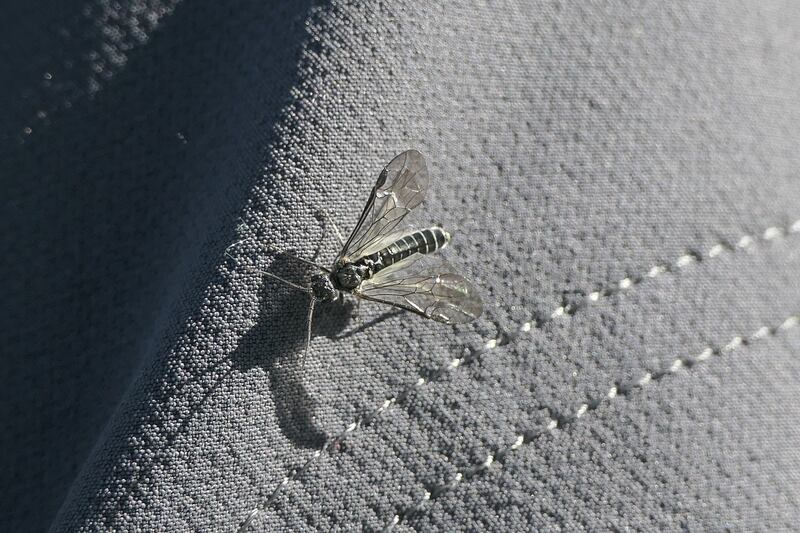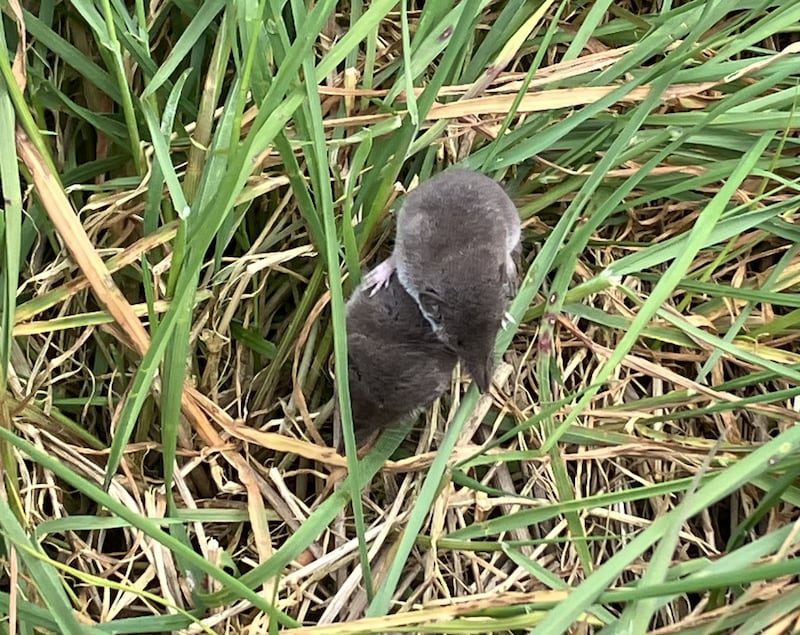We saw this pine with red berries along a forest path while walking along the Wicklow way in late April. The berries were amazing, almost like raspberries! I wondered if it was Scots pine, which has red female flowers (but these were definitely berries) and yellow male flowers, and I think it had two needles joined at base. – Sylvia Magill, Co Dublin
This is not a Scots pine but a fir tree, Abies pinsapo, the Spanish fir. What you describe as red berries – and, to be fair, they do look like luscious ripe raspberries in your photo – are the male cones. These are red before shedding pollen and remain red around the edges during the pollen shedding season, which happens towards the end of May. The female cones, which are 10cm long, are pale green during the summer and clustered around the top of the tree.
For the third season this little bird has taken over my outdoor letterbox. There are six eggs this year; three hatched safely in 2023. Last year I thought it was a gold crest, although it was hard to spot it flying in and out of the letter aperture, then and now. My more knowledgeable neighbours think it’s a blue tit. Can you identify the little bird for me please? – Frank Russell, Ballyvaughan, Co Clare
Neither yourself nor your more knowledgeable neighbours are correct. This is a great tit with a black head and white cheek patches. Blue tits have blue heads and goldcrests make small cup-shaped nests of mosses and lichens held together with spiders’ webs which hangs from a branch. I hope the photo you sent is from a camera in the box as photographing birds on their nests is considered to be a disturbance during the breeding season.

We found this attached to a bit of heather on the side of Black Hill in Co Wicklow. Can you identify it? – Tom Fuller, Co Dublin
This is the pupa of the emperor moth. These moths have large, hairy green caterpillars that feed on heather. They then spin cocoons around themselves, which are attached to heather, inside which they metamorphose into large grey adult moths. These have spectacular eye spots that resemble the eyes of an owl. Emperor moths are the only Irish representative of the Satuniidae, a family that includes the giant silk moths of India.

This is one of a number of flies that joined us during a sunny lunch break on Camenabologue Mountain in the Wicklow Mountains on April 21st. I wondered if it was a St Mark’s fly, as they are known to be active at this time, but it doesn’t look as hairy as the images I’ve seen online. – Helen Lawless, Co Wicklow
You are right: it is not a St Mark’s fly, which are black and hairy and fly with their legs dangling beneath them. It is a male sawfly, which is not actually a fly at all as it has four wings. All fly species have two wings – hence the name Diptera. This is a member of the group Hymenoptera, to which bees and wasps also belong. Female sawflies have an ovipositor for laying eggs protruding from their rear end. This one has not, so it is a male.

Happy shrews. – John McNamara, Co Kildare
No wonder the white-toothed shrew has spread so fast since they were first recorded here in Co Tipperary in 2008. They don’t seem to suffer from camera shyness anyway. The females are territorial and aggressive, and they quickly out-compete the native pygmy shrew as they spread into areas where they live. They are all over Munster and most of Leinster now.
[ The life of the aptly named stink bugOpens in new window ]
Please submit your nature query, observation, or photo with a location, via irishtimes.com/eyeonnature












